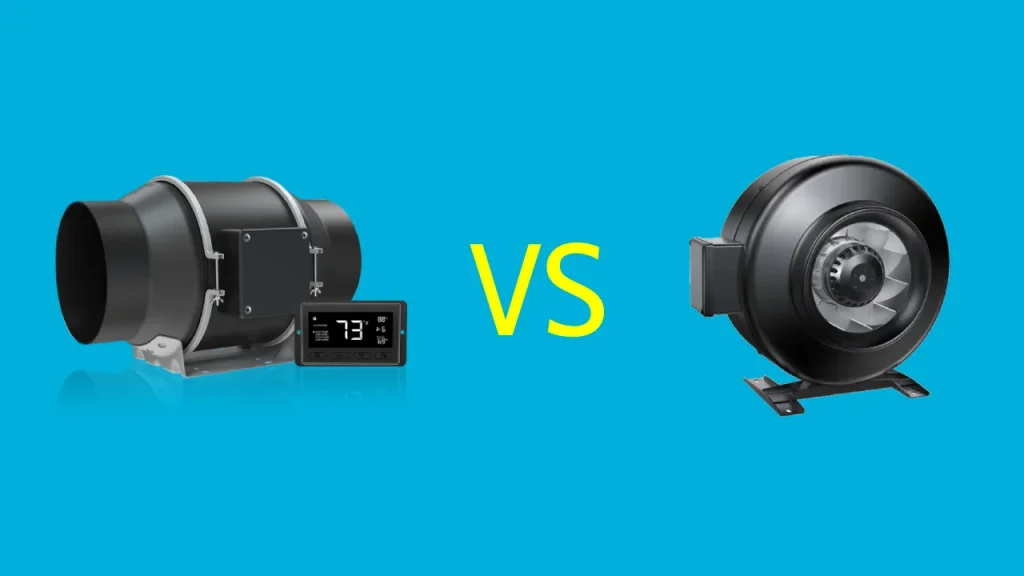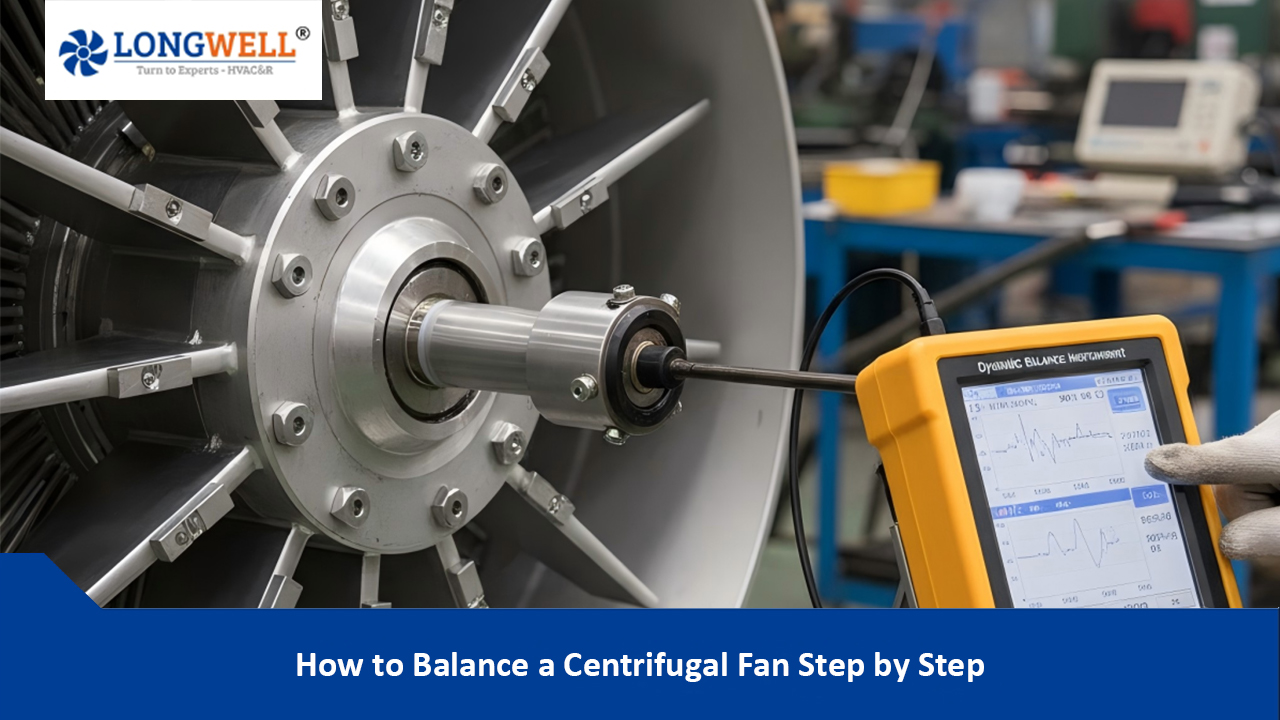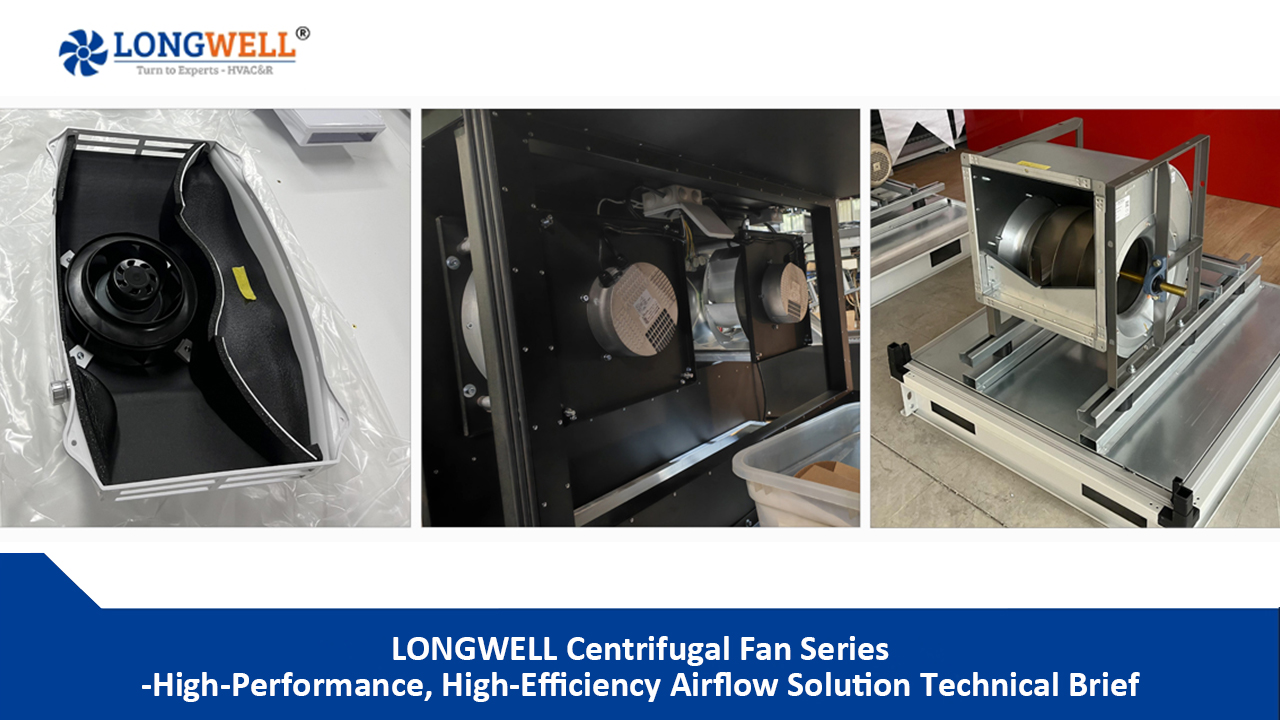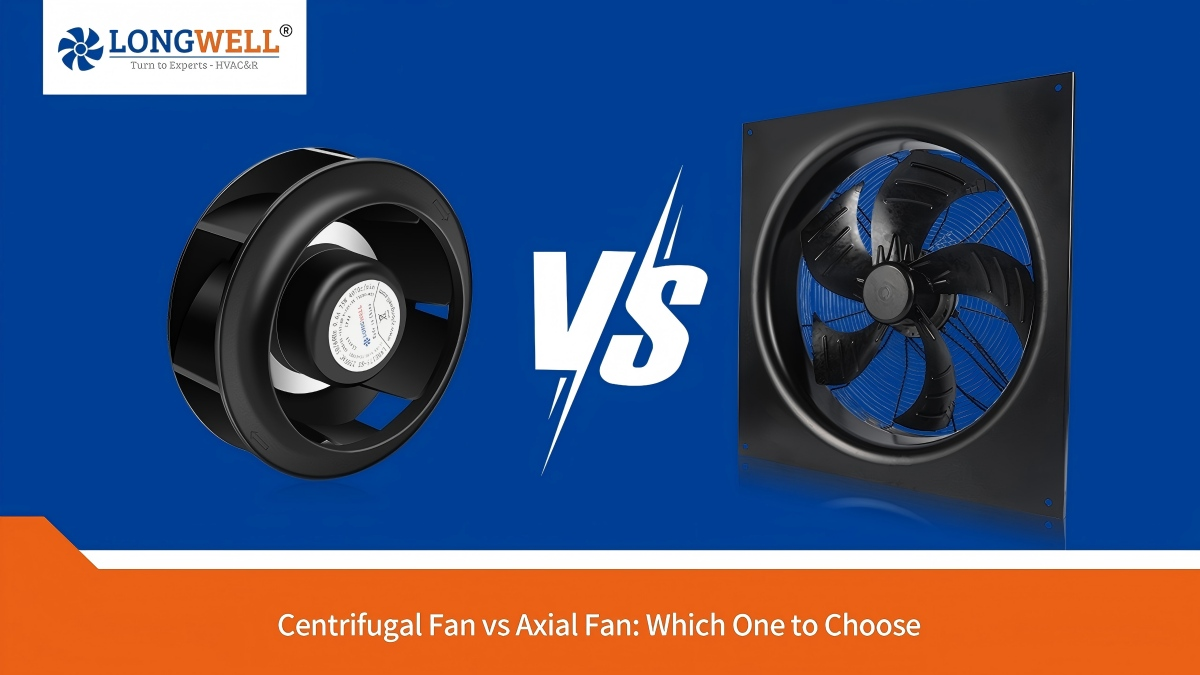
Key Highlights
- Choosing between inline and centrifugal duct fans depends on your specific ventilation needs.
- Inline fans are known for their compact design and efficient airflow, making them suitable for confined spaces.
- Centrifugal fans are ideal for applications requiring higher pressure and quieter operation.
- Understanding the airflow characteristics, noise levels, and installation requirements of each type is crucial for selecting the appropriate fan.
- This blog post will provide a technical overview of the differences and help you make informed decisions.
Introduction
Good airflow and ventilation are key for keeping indoor spaces comfortable. Duct fans, often controlled by a thermostat, are important tools for efficient operation. They help move air and control things like temperature, humidity, and air quality. When you choose a duct fan, think about things like energy efficiency, noise levels, and how easy it is to install.
Overview of Inline and Centrifugal Duct Fans
Inline and centrifugal duct fans are two popular types used in HVAC systems for homes and businesses. Each one has special features that make it good for different uses.
Inline duct fans are put directly inside the ductwork. They are shaped like a cylinder and have blades that push air through the duct in a straight line. On the other hand, centrifugal duct fans have a more complicated design. They have a scroll-shaped case and an impeller that spins to push air outwards. Generally, centrifugal fans are bigger than inline fans and are usually placed outside the ductwork.
Definition and Basic Operation of Inline Duct Fans
Inline duct fans work well and are often used where space is tight. These fans have a motor, an impeller, and a housing, all in a round unit. The motor drives the impeller. It pulls air in through the inlet and pushes it straight through the ductwork. For inquiries, feel free to email us for more information.
We measure how well inline fans perform in cubic feet per minute (CFM) and inches of water column (W.C.). This shows how much air the fan can move in a minute. Inline fans usually have high CFM ratings, often exceeding 5 ft for effective operation. That’s why they are good for places like bathroom exhaust, dryer venting, and grow room ventilation. Their small size makes them easy to install in the duct, whether flat or standing up.
Additionally, inline duct fans usually cost less than centrifugal fans. They are a smart choice for many ventilation needs. Their simple design makes installation and maintenance easy too.
Definition and Basic Operation of Centrifugal Duct Fans
Centrifugal fans work using centrifugal force. They have a rotating impeller inside a scroll-shaped casing. When the impeller turns, it pulls air into the inlet and pushes it out towards the edges of the housing. This creates a high-pressure area. The pressurized air then moves out of the fan’s outlet and into the ductwork.
One big benefit of centrifugal fans is that they create higher static pressure than inline fans. This makes them great for moving air through long ducts or dealing with resistance. This is often needed in HVAC systems for larger buildings, factories, and commercial kitchens.
Also, centrifugal fans are usually quieter than inline fans, especially when running fast. The scroll-shaped housing helps reduce the noise from the impeller. However, their larger size and more complicated design can make them harder to install and possibly more expensive than inline fans.
Key Differences Between Inline and Centrifugal Fans
Understanding the main differences between inline fans and centrifugal fans is important when picking the right one for your ventilation needs.
Both types move air, but they work in different ways. Inline fans are great at moving a lot of air through straight ducts. On the other hand, centrifugal fans work best when there is high static pressure needed to handle complicated duct systems.
Airflow Characteristics and Efficiency
Inline and centrifugal fans exhibit distinct airflow patterns which influence their suitability for different ventilation applications:
- Inline fans generate a linear airflow that’s consistent through the duct. This makes them efficient for moving air over moderate distances with minimal pressure loss. They’re well-suited for straightforward duct layouts with fewer bends and obstructions.
- Centrifugal fans, in contrast, produce an airflow that’s discharged radially from the impeller. This characteristic enables them to generate higher static pressure, making them suitable for applications with longer, more complex ductwork or those requiring air to be moved against resistance.
| Feature | Inline Fan | Centrifugal Fan |
|---|---|---|
| Airflow | Linear | Radial |
| Pressure | Lower | Higher |
| Efficiency | High for low to medium pressure applications | High for high pressure applications |
| Applications | Bathroom exhaust, dryer vents, grow rooms | HVAC systems, industrial ventilation, commercial kitchens |
Thanks to advancements in fan technology, EC (electronically commutated) motors are becoming increasingly popular in both inline and centrifugal fans. These motors offer enhanced efficiency, reduced noise, and more precise speed control, leading to further energy savings and improved performance.
Noise Levels and Installation Complexity
Noise levels and how easy it is to install fans are key points to think about when choosing between inline and centrifugal fans, especially for homes.
- Inline fans usually make more noise, especially when they run fast. Still, many makers now add features to reduce noise, like soundproof materials and better blade designs.
- Centrifugal fans are often quieter because of their closed design and impeller. This makes them suitable for quiet places like bedrooms, living rooms, and offices.
When it comes to installing the fans:
- Inline fans are typically simpler to install. They are small and have easy duct connections.
- Centrifugal fans usually need more space and special ductwork, which can make them harder to install. It’s important to look for UL listing when choosing either fan type, especially if you plan to use them with AC power.
Conclusion
In conclusion, when deciding between inline and centrifugal duct fans, it depends on your specific needs. Inline fans save space and are quieter. They work well for homes. Centrifugal fans, however, move a lot of air efficiently. They are better for industrial or commercial use. To make the best choice, think about differences in airflow, noise levels, and installation challenges. This will help your ventilation system work better. Understanding these options will help you create a nicer environment. If you need help picking the right fan for your project, just ask for expert advice made for you.



